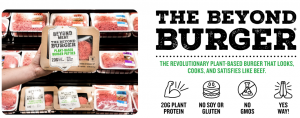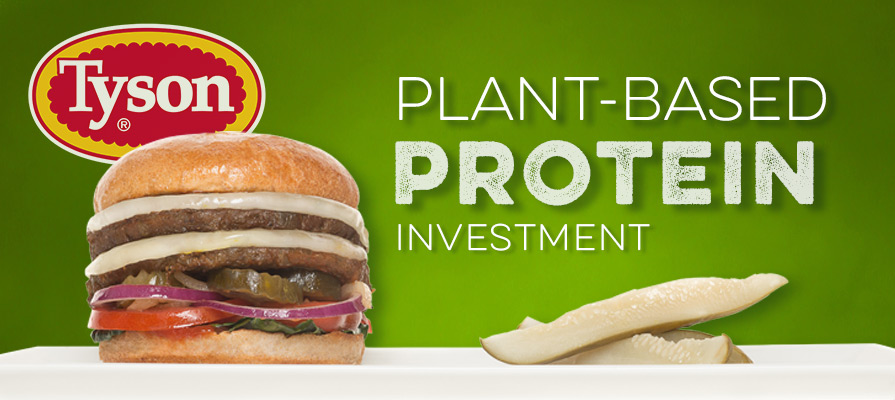The tale of two food companies shows that big consumer goods brands are NOT doomed to decline, despite the negative predictions to this effect in many newspapers and consultancy reports. “Food brands are struggling to create growth, saddled with off-trend products and losing share to upstart rivals,” screamed one headline from CNBC for example (1).
On the one hand, the Campbell Soup Company’s woes do fuel the fire of the doom merchants. CEO Denise Morrison suddenly departed in May, on the back of three years of declining sales and a sharp drop in share price.
But on the other hand we have Tyson Foods, a less well known company I discovered when digging into the Denise’s demise. It recently reported record 1st quarter earnings, on the back of the company’s best ever year in 2017. Its share price is up 173% since 2013, compared to Campbell’s 23% decline (down 43% in the last two years).
So, how has Tyson turbo charged growth, whilst Campbell’s is crying into their soup?
1.Smart, strategic acquisitions
At the heart of Tyson’s growth strategy is the transformation from a producer of meat & poultry, where brand loyalty is low, into a branded business selling higher margin ‘prepared foods’, including protein-based snacks and meal solutions.
This growth strategy drove the acquisition of Hillshire Brands in 2014, bringing brands including Jimmy Dean, Ball Park and Hillshire Farm. Importantly, Tyson built on and enhanced it core capabilities in meat production, and stayed focused on the fast growing demand for protein. In four years, prepared foods has grown from a $3.3 billion business generating 7% of Tyson’s earnings, to an $8 billion business that is 25% of earnings (1)
In contrast, Campbell’s strategy has built less effectively on the company’s core capabilities. A key objective was to diversify into fresh foods and health & wellbeing, leading to the purchase of organic soup company Pacific Foods for $700 million and Bolthouse Farms for $1.55 billion. However, Campbell “had little experience in the skill-set required for harvesting, fertilizing and planting,” (2), leading to an eye-watering $619 million write-off on the Bolthouse Farms business, 40% of the purchase price.
Campbell’s growth strategy also appears more muddled. The recent purchase of savoury snacks company Snyder’s-Lance Campbell’s for $4.87 billion has seemingly little to do with being a purveyor of healthy fresh foods, although it does increase presence in a growing category. Maybe the change of leadership will provoke a clearer strategy: interim CEO McLoughlin recently told investors he is considering a “thorough and critical” review of its business, with “no sacred cows.” (1)
2.Core renovation and innovation
Tyson focuses renovation and innovation on four clear platforms (3) that have driven growth in the core business:
- Breakfast reinvented: new solutions for convenient, complete and assembled breakfasts. For example, Jimmy Dean Stuffed Hash Browns give a new twist to a well-loved food by stuffing it with meat and cheese
- Smart shortcuts: higher quality and unique meals with less preparation
- Purposeful snacking: expanding into protein-based snacks that satisfy cravings between meals. Here, Tyson stretched the Ball Park brand from hot dog sausages into the fast growing jerky category, using flame grilling to offer an improved taste.
- Holistic wellness: bringing clean label varieties of products to market, such as the the Hillshire Naturals range of lunch meats. On a larger scale, Tyson is also removing the use of antibiotics in its supply chain.

Campbell seems to have been less successful in growing its core soup business. It still has a leading 59.5% share of U.S. wet soup (52 weeks to April 18), but dollar sales dropped 1.9% in a market that actually grew 1.3%. Other brands grew 3.8% and Private Label +11.2% over the same period.
3.Future-Proofing the business
One criticism levelled at big brand owners is a slowness to react to market trends, compared to small, more agile ‘insurgent brands’. Tyson shows this doesn’t have to be the case, taking pro-active steps to ‘future-proof’ its business, including a ventures unit investing in new food businesses.
Now, many or even most food companies have new venture units, including Campbell. But what stands out for me in Tyson’s approach is the clarity of their strategy, that focuses on two key areas: ‘the internet of food’ and sustainability, including alternative plant-based protein. In the second category is Beyond Meat, a company developing a plant-based burger they claim “looks, cooks and satisfies like beef”: a pretty radical investment for North America’s biggest meat producer!

In conclusion, Tyson’s success shows that big brand companies can survive and thrive, provided they have a smart strategy that inspires and guides revitalisation of the core business, building on and enhancing their capabilities.
For more on brand growth, see this other post: https://thebrandgym.com/brand-growth-inspiration-from-mr-bean-2-2-2/
